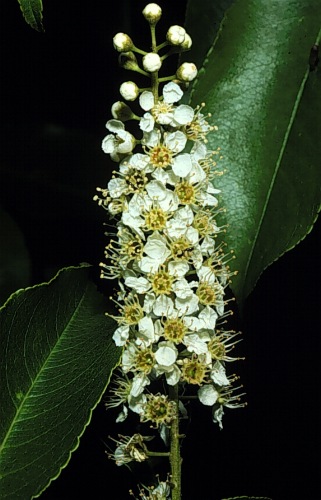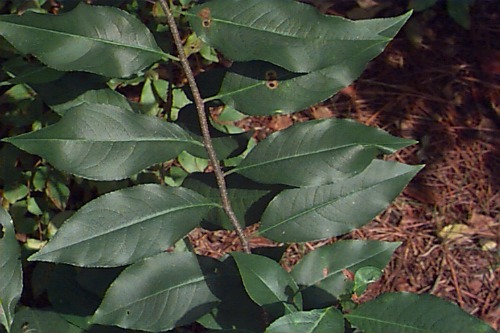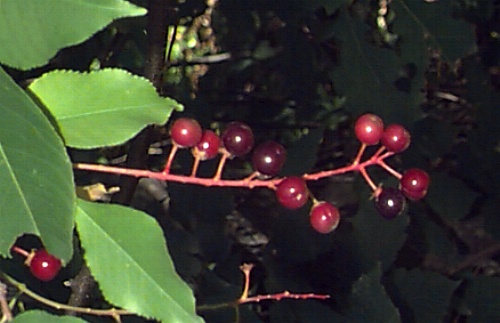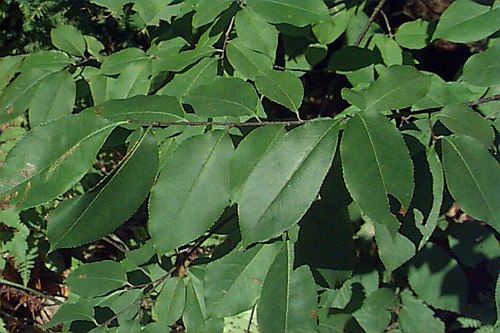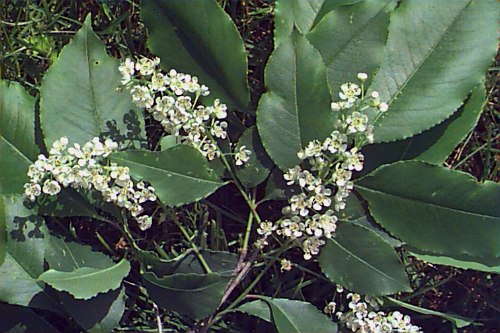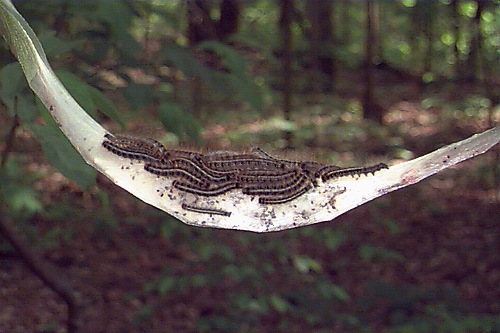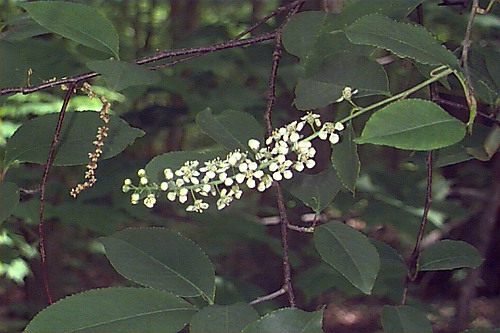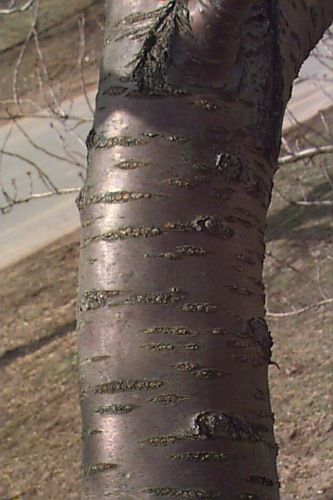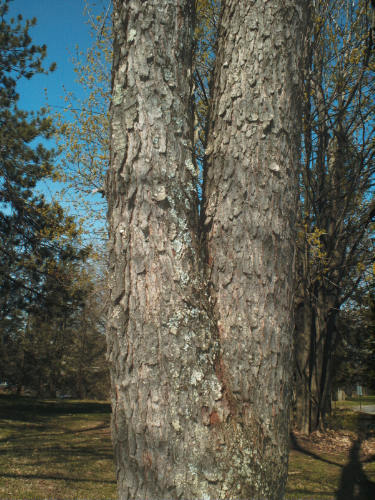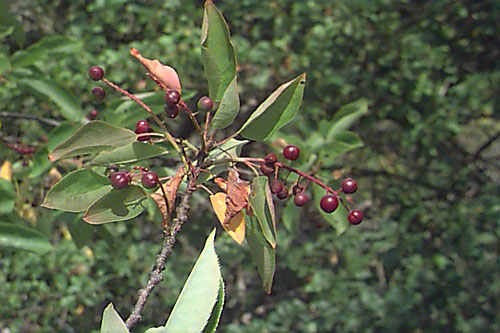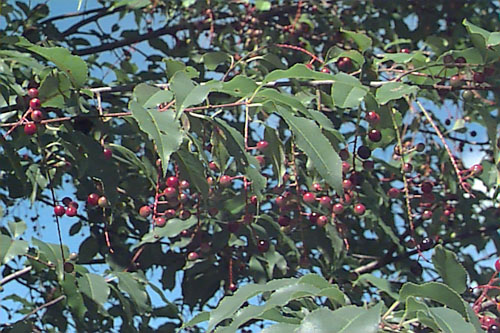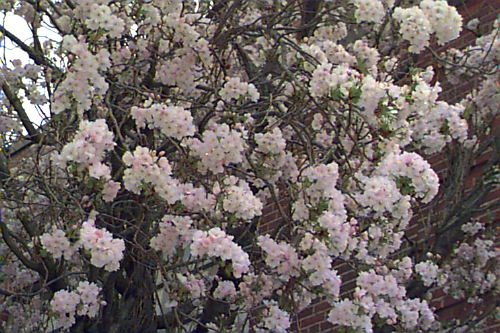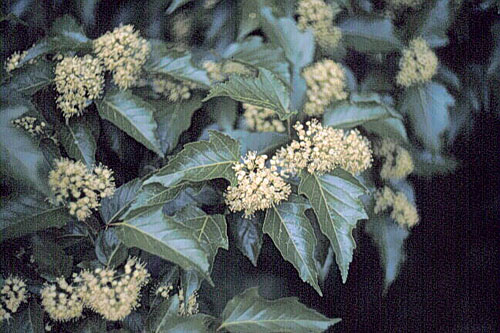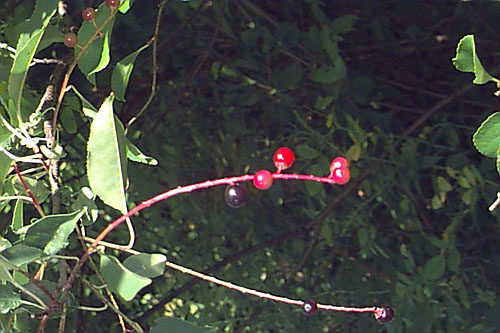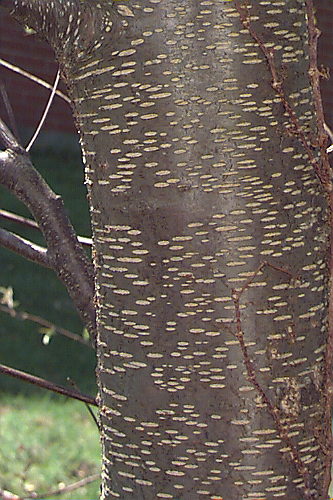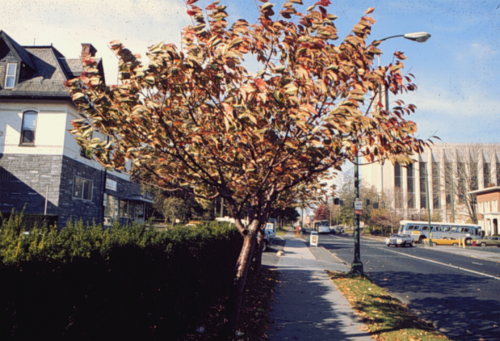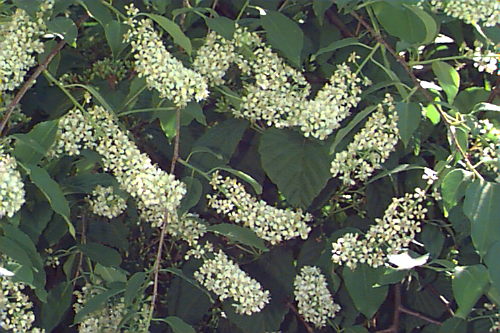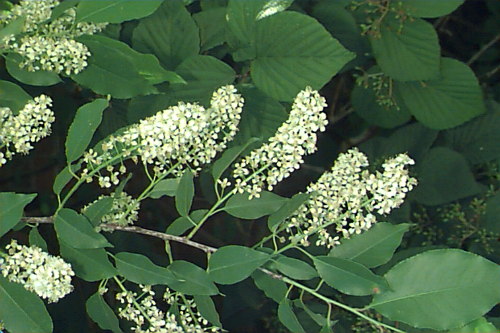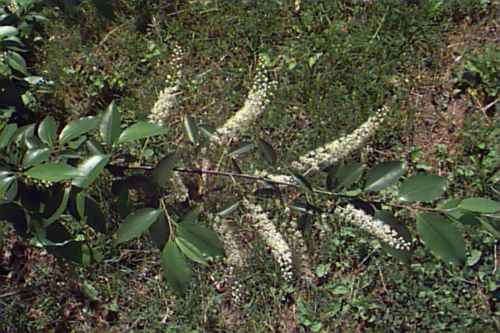Prunus serotina
Black Cherry
Rosaceae
ExpandHabitat
- native to Canada down through the eastern part of the United States
- hardy to zone 3
Habit and Form
- a deciduous tree
- oval crown, dense
- pendulous branches
- 60' to 90' tall
- 35' to 50' wide
- medium texture
- rapid growth rate
- alternate leaf arrangement
- simple, deciduous leaves
- serrulate margins
- ovate leaf shape
- 2" to 5" long
- dark green leaf color
Autumn Foliage
- yellow to ornage fall color
Flowers
- white flowers
- 0.33" acorss
- fragrant
- blooms in May
- borne in pendulous racemes, 4" to 6" long
- showy
Fruit
- rounded, purplish-red drupe
- 0.33" in diameter
- edible
- mature in August
Bark
- brown, slender stems
- gray-brown bark color
- scaly trunk
Culture
- prefers deep, moist, fertile soil
- full sun to part shade
- salt tolernat
- drought tolerant
Landscape Use
- along highways
- for weeping effect
Liabilities
- fall webworm
- foliage is poisonous
- tent caterpillars
ID Features
- deciduous tree
- alternate leaf arrangement
- serrulate leaf margins
- ovate leaf shape
- white flowers
- round, purplish-red fleshy fruit
Propagation
- by cuttings
- by seed
Cultivars/Varieties
'White Sparkle' - One of the few selected forms available of this native tree, this cultivar is a dense grower with a slight weeping habit. It flowers heavily and displays very good fall color.
